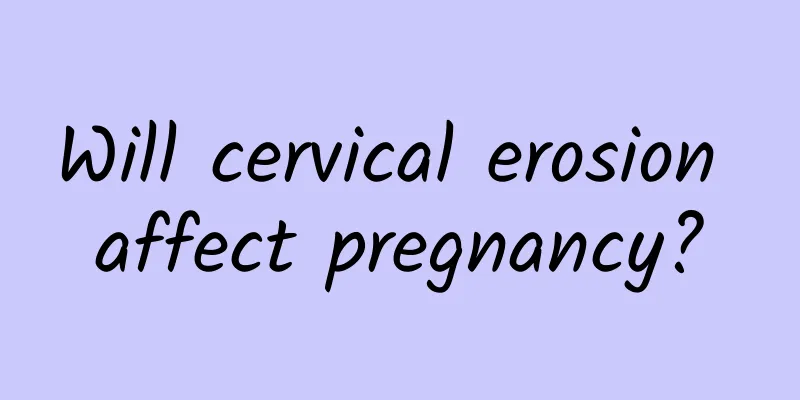What are the sequelae after abortion? What are the dangers of having too many abortions?

|
Abortion is a common method of terminating pregnancy. Although the operation is safe, many people have doubts about whether there will be sequelae after the operation and the harm of multiple abortions. This article will discuss some of the sequelae that may occur after abortion and the possible harm of too many abortions. 1. Possible sequelae after abortion 1. Bleeding: After an abortion, the endometrium is scraped away, which may cause uterine bleeding. In most cases, the amount of bleeding is small and can stop on its own, but if there is excessive bleeding and it lasts for a long time, you need to seek medical attention in time. 2. Infection: If the abortion operation is not performed in a standardized manner or the sanitary conditions are poor, infection may occur. Symptoms of infection include fever, lower abdominal pain, etc., and medical treatment is required in a timely manner. 3. Uterine perforation: During the abortion procedure, uterine perforation may occur due to operational errors or uterine variation. Perforation can lead to serious consequences such as uterine rupture and internal organ damage, requiring emergency surgery. 4. Mental stress: Abortion is a psychological burden that may bring great mental stress to women. Some women may feel guilty, anxious or depressed after the operation, which requires timely psychological support and help. 2. The harm of too many abortion operations 1. Cause abnormal proliferation of the endometrium: Frequent abortions will cause repeated stimulation to the endometrium, leading to abnormal proliferation. This may lead to irregular menstruation, excessive or insufficient menstrual flow, and in severe cases, may cause infertility. 2. Uterine adhesion: Multiple abortions may cause adhesion between the endometrium and the uterine wall, leading to uterine dysfunction and infertility. 3. Increased surgical risks: Every surgery has certain risks, and multiple abortion surgeries mean the accumulation of multiple surgical risks. Complications may occur during the operation, such as infection, uterine perforation, etc., increasing the harm to the body. Possible sequelae after abortion include bleeding, infection, uterine perforation and mental stress. Frequent abortions may lead to abnormal endometrial hyperplasia, uterine adhesions and increased surgical risks. Therefore, for the sake of our own health, we should try to avoid frequent abortions. At the same time, we should also strengthen our understanding and use of contraceptive knowledge to reduce the occurrence of unwanted pregnancies. If you are unfortunately pregnant, it is recommended to consult a doctor and choose contraceptive measures or other appropriate solutions that are suitable for you. |
<<: How to use moxibustion to treat dysmenorrhea The correct method of moxibustion for dysmenorrh
>>: What to eat after abortion to replenish the body What to eat after abortion
Recommend
Experts explain the compression symptoms of ovarian cysts
Compression symptoms are a more serious symptom o...
What are the symptoms of irregular menstruation in girls? How to regulate irregular menstruation during adolescence?
Symptoms of irregular menstruation in girls Irreg...
What are the dangers of habitual miscarriage? Pay attention to these 3 aspects
There are many reasons for habitual miscarriage. ...
Women should try to master the conditioning methods of cervical erosion
Nowadays, more and more women suffer from cervica...
How to make sure the abortion is clean? Doctors recommend these 4 methods
To determine whether a miscarriage is complete, a...
Don't underestimate the pain anymore - the symptoms of uterine fibroids!
Whether uterine fibroids have symptoms and their ...
How to treat irregular menstruation after childbirth? Teach you 4 tips to easily treat irregular menstruation after childbirth
Due to work pressure, staying up late, frequent c...
How to treat uterine fibroids in women? What are the precautions for uterine fibroids?
The uterus is a very important organ for women. W...
Are the symptoms of cervical precancerous lesions serious?
There are many symptoms of cervical precancer. As...
The main hazards of endometrial tuberculosis
Endometrial tuberculosis refers to a disease that...
People should always pay attention to the causes of vaginitis
At present, the incidence of vaginitis is getting...
Three common causes of ovarian cysts
Ovarian cysts are a common gynecological disease ...
Working day and night can easily lead to morbid obesity and diabetes
People who work day and night shifts feel most de...
How to check for hyperprolactinemia
Hyperprolactinemia is the most common pituitary d...
After the Chinese New Year, digestive obesity has become a golden period for weight loss
From the Lunar New Year to after the Lantern Fest...









